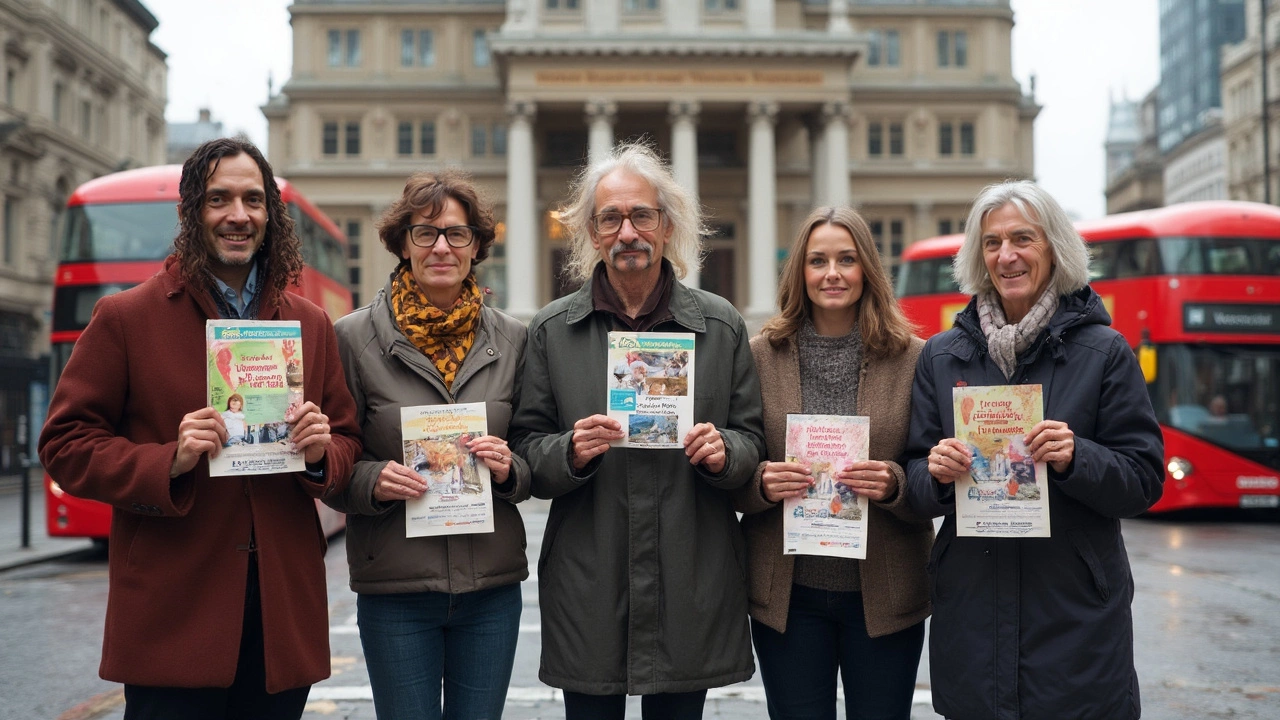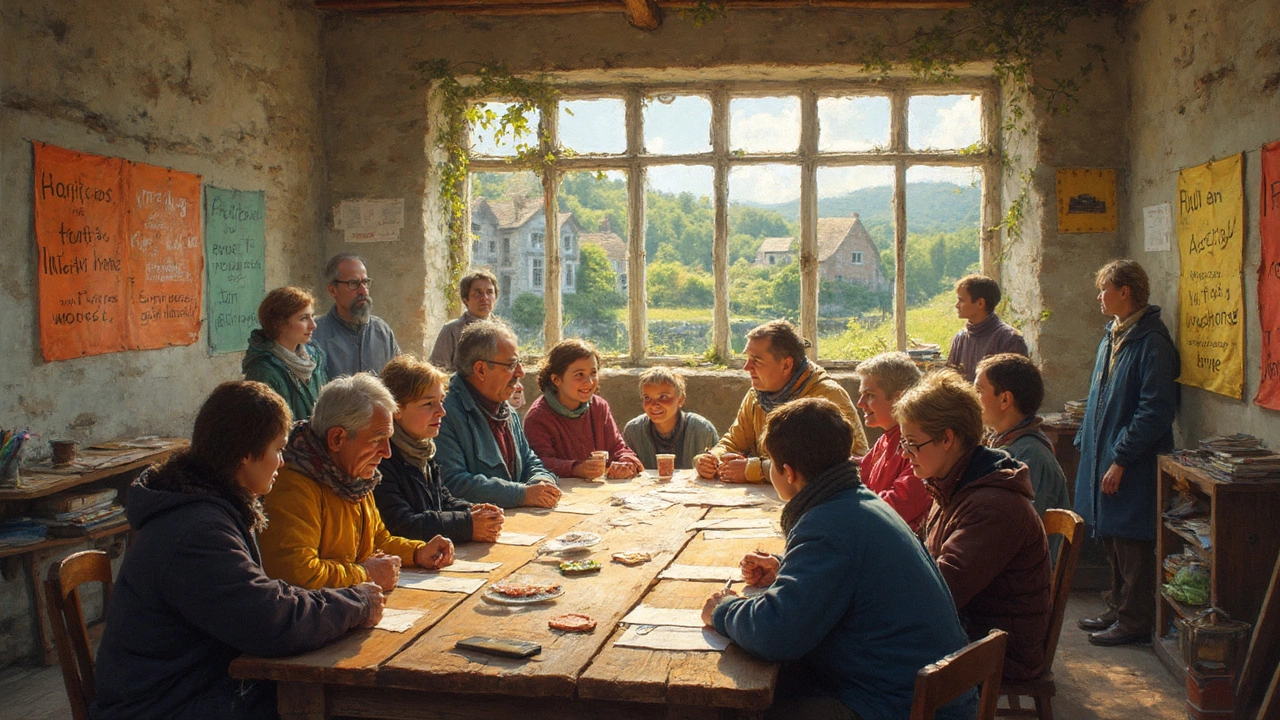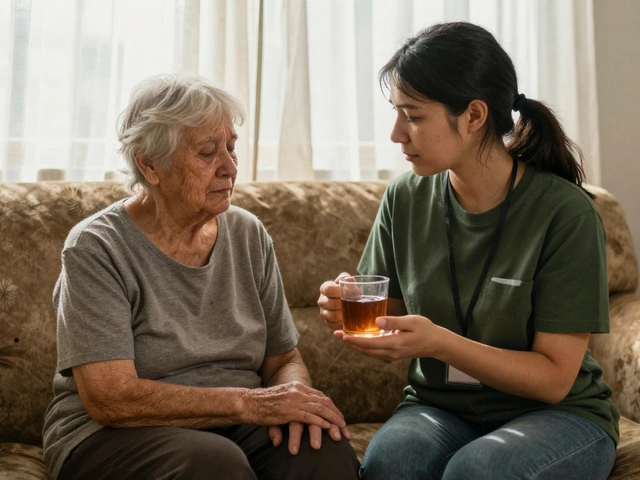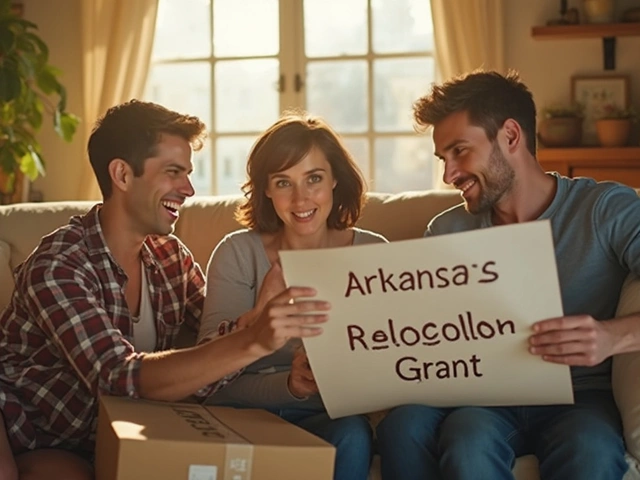How to Write an Engaging Community Outreach Plan
So, you've decided to tackle a community outreach plan. It might sound complicated, but don't worry—it's all about knowing your audience and setting the right goals. First things first, understanding the community's needs is crucial. After all, how can you help if you're not sure what the needs are? Spend some time talking to community members, attending local events, and genuinely listening to what folks have to say.
Once you've got a handle on the needs, it's time to set some clear and achievable goals. What are you hoping to accomplish with your outreach efforts? Maybe you're looking to boost local engagement or provide support for a specific issue. Whatever it is, ensure your goals are SMART—specific, measurable, achievable, relevant, and time-bound. With clear goals in mind, you're one step closer to making a difference.
- Understanding Community Needs
- Setting Clear Goals
- Identifying Your Target Audience
- Choosing the Right Channels
- Building Lasting Relationships
Understanding Community Needs
Before diving into the nitty-gritty of your community outreach plan, you need to know the community's top concerns. It's kind of like knowing the ingredients before you start cooking—you wouldn't want to make a dish without them!
Talk to the Locals
Start by having casual chats with people in your area. Attend local events or just hang around popular spots. This is a great way to understand what really matters to them. Pay attention to common themes they bring up. These are the issues you should be focused on. Simple, right?
Use Surveys and Questionnaires
If you want a broader perspective, consider using surveys. They’re not only effective but also easily shared online, which means you can collect loads of info quickly. Keep your questions short and sweet to make sure people don’t lose interest halfway through. Want a tip? Offer a little treat for completing it—people love that!
Check Out Online Platforms
Don't skip online spaces. Platforms like Facebook groups or local forums can be goldmines for discovering hot-button issues. Keep an ear out for recurring topics in these discussions. And hey, they’re online, so you can do this while sipping coffee at home.
Partner with Local Organizations
Partnering with organizations already serving your community can save you tons of time. They often know the inside scoop and can point you in the right direction. Plus, it's great to get a foot in the door with these groups—they could become powerful allies.
According to a recent survey, over 60% of successful outreach plans started with addressing community concerns directly identified through local organizations and online interactions. It's evidence that shows just knowing the needs makes a huge difference.
So there you have it. Whether it's through a cup of coffee with a neighbor or tapping away at your laptop in an online group, understanding the needs of your community sets the stage for a successful outreach plan.
Setting Clear Goals
When it comes to crafting an effective outreach plan, setting clear goals is like plotting a course for a journey. Without them, you might end up lost or off-track. So, how do you figure out what you want to achieve? Here’s a simple approach.
Define What Success Looks Like
Start by picturing what success looks like for your community outreach. Is it increased community participation? Maybe it's raising awareness about a local event or cause. Whatever it is, get specific about your vision of success.
Create SMART Goals
If you haven’t heard of SMART goals before, they’re a great framework to ensure your goals aren't just dreams. Here’s what it means:
- Specific: Be clear about what you want to accomplish.
- Measurable: Include a way to measure your progress (think numbers, percentages).
- Achievable: Make sure your goal is realistic given your resources.
- Relevant: Ensure it aligns with your organization’s mission and community needs.
- Time-bound: Set a deadline or timeline to keep things on track.
Prioritize for Impact
Why bite off more than you can chew? Focus on what's most essential and likely to have the biggest impact. It’s better to nail a few key goals than to spread yourself too thin over many. Ask yourself: What does my community need most right now?
To sweeten things, here’s a little-known fact: Organizations that set defined goals for their community engagement tend to see a 20% increase in their outreach effectiveness. That's a pretty good incentive to get those goals in place, right?

Identifying Your Target Audience
Figuring out who you're reaching out to is like setting your GPS before a trip. Who exactly needs to hear your message? If you get this right, your community outreach efforts will have a much better shot at success.
A good start is to look at the characteristics of the community you’re serving. Is your focus on young families, seniors, or maybe local businesses? Each group is unique, and understanding their specific needs will tailor your approach effectively. This might mean organizing events for families at local parks or holding workshops tailored for small business owners.
Use Data to Your Advantage
Data isn't just for tech geeks—it's a goldmine for your outreach strategies. Use community surveys, census data, or even social media insights to find out more about the folks in your area. For example, if you're in Auckland's central suburbs, check out local council data for insights on demographics.
Get Feedback Directly
Don't underestimate the power of simply asking questions. Casual chats at community centers or during local events can give you deep insights into local issues. When people share their thoughts, it often uncovers needs you might not have thought about.
Create Audience Profiles
Once you've gathered information, it's time to create audience profiles. Think of these as mini-biographies of your target groups. What are their interests and challenges? How do they prefer to communicate? With this, you can fine-tune your outreach plan.
Approaching your target audience with a plan based on these insights means you'll speak directly to their needs. It not only shows your understanding but also boosts your credibility in the community.
| Target Group | Common Needs | Preferred Channels |
|---|---|---|
| Young Families | Childcare, family-friendly events | Social media, local schools |
| Seniors | Health services, social gatherings | Community centers, print newsletters |
| Local Businesses | Networking, local market insights | Workshops, business forums |
Choosing the Right Channels
Picking the right ways to reach your audience is like finding the perfect pair of shoes—different occasions call for different styles. When it comes to community outreach, selecting effective communication channels is essential. You want to meet people where they already hang out, both online and offline.
For modern community engagement, social media is a big player. Platforms like Facebook, Twitter, and Instagram are bustling with active communities. They offer a great space for starting conversations and sharing real-time updates. Be mindful, though, each platform has its vibe. Instagram caters to visuals, while Twitter is all about quick, snappy updates.
Don't disregard traditional channels either. Local newspapers, radio stations, and community bulletin boards still hold value, especially for reaching audiences who might not be as active online. Organizing in-person events or workshops can also create a sense of solidarity and personal connection that digital spaces sometimes lack.
Steps to Choose Your Channels
- Identify your audience: Dig into demographics to see where your target crowd spends their time.
- Consider the message: Match your channel to what you're communicating. Quick news fits Twitter; meaningful stories might be better for Facebook.
- Assess your resources: Social media might seem cheap, but time is money. Make sure you have enough resources to manage your chosen platforms effectively.
According to the stats from recent studies, about 71% of the online population uses Facebook, making it a prime spot for engagement. However, don't just focus on numbers; think about where your specific audience is most comfortable.
The key takeaway here is flexibility. The best outreach plan adapts to the community's evolving preferences. Monitor how your channels perform and be ready to switch things up if needed.

Building Lasting Relationships
When it comes to community outreach, building lasting relationships is key, and it’s not as daunting as it might sound. It's all about communication, trust, and mutual benefit. Here’s how to do it effectively.
Communicate Effectively
Regular and open communication is the backbone of any strong relationship. Don't just talk; make sure to listen too. Engage community members through different channels—be it social media, community meetings, or even a casual chat at a local gathering. Open communications help build trust and show that you’re genuinely interested in their concerns and suggestions.
Build Trust
Trust doesn't happen overnight. Be consistent in your message and follow through on your promises. Showcase your successes and openly address any setbacks. Acknowledging when things don't go as planned shows honesty and earns respect. People appreciate transparency and will be more likely to engage with your community outreach efforts.
Find Mutual Benefits
Look for win-win scenarios. How can your outreach initiative help others while meeting your objectives? Maybe there's a way to support a local business, which in turn supports your community event. Brainstorm with community members to identify unique opportunities where both can gain something valuable from the relationship.
Invest in Personal Connections
Take the time to know people on a personal level. Remember names, ask about family, show up for local events. Simple as it sounds, being present helps reinforce connections. Plus, it makes your outreach plan more genuine and rooted in the community's actual needs.
By focusing on clear communication, trust building, mutual gain, and personal connections, you're laying the groundwork for lasting relationships that will make your community engagement efforts a genuine success. Strong relationships foster a sense of community and make your outreach more meaningful. So, take these steps to heart and watch your plan come to life!







